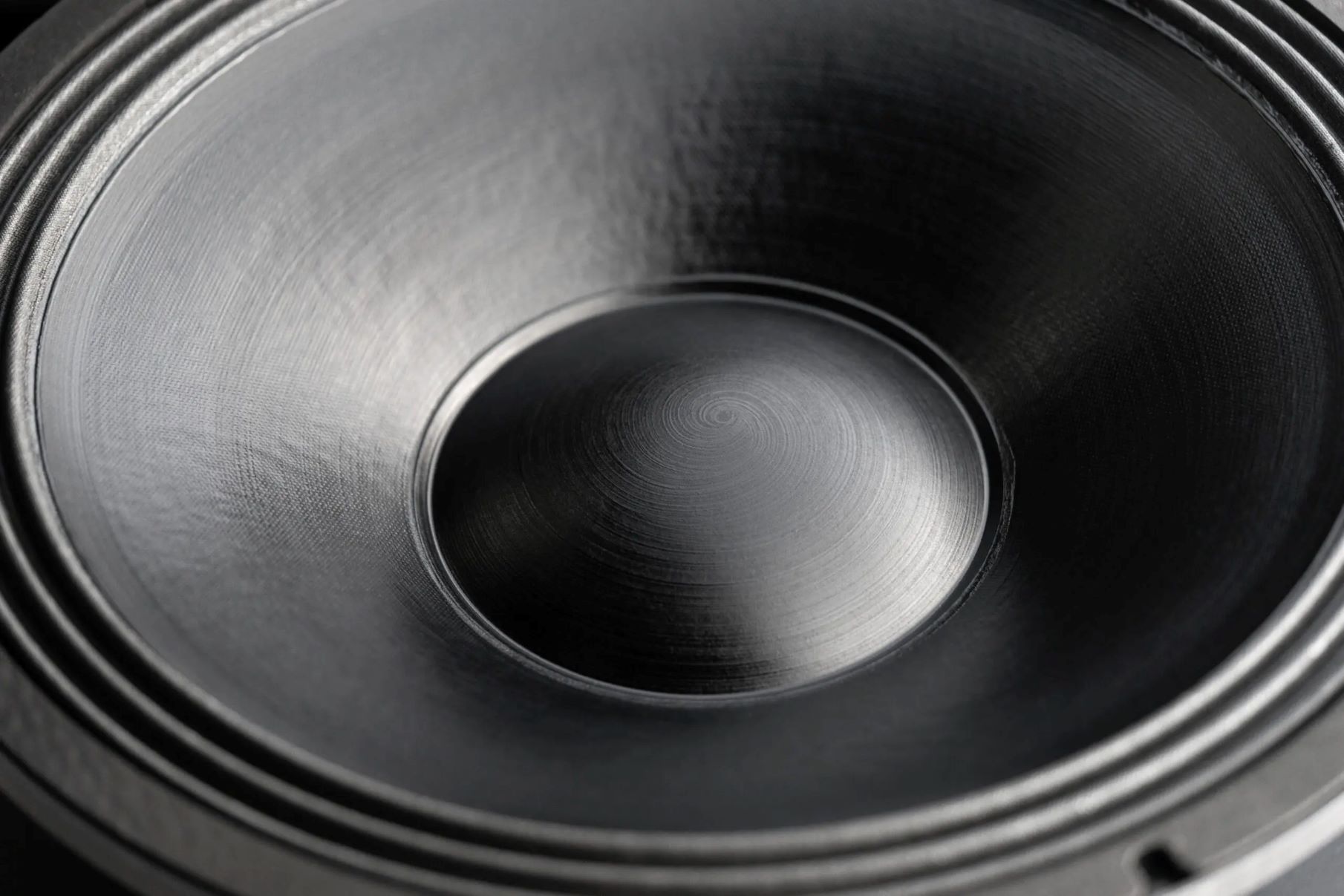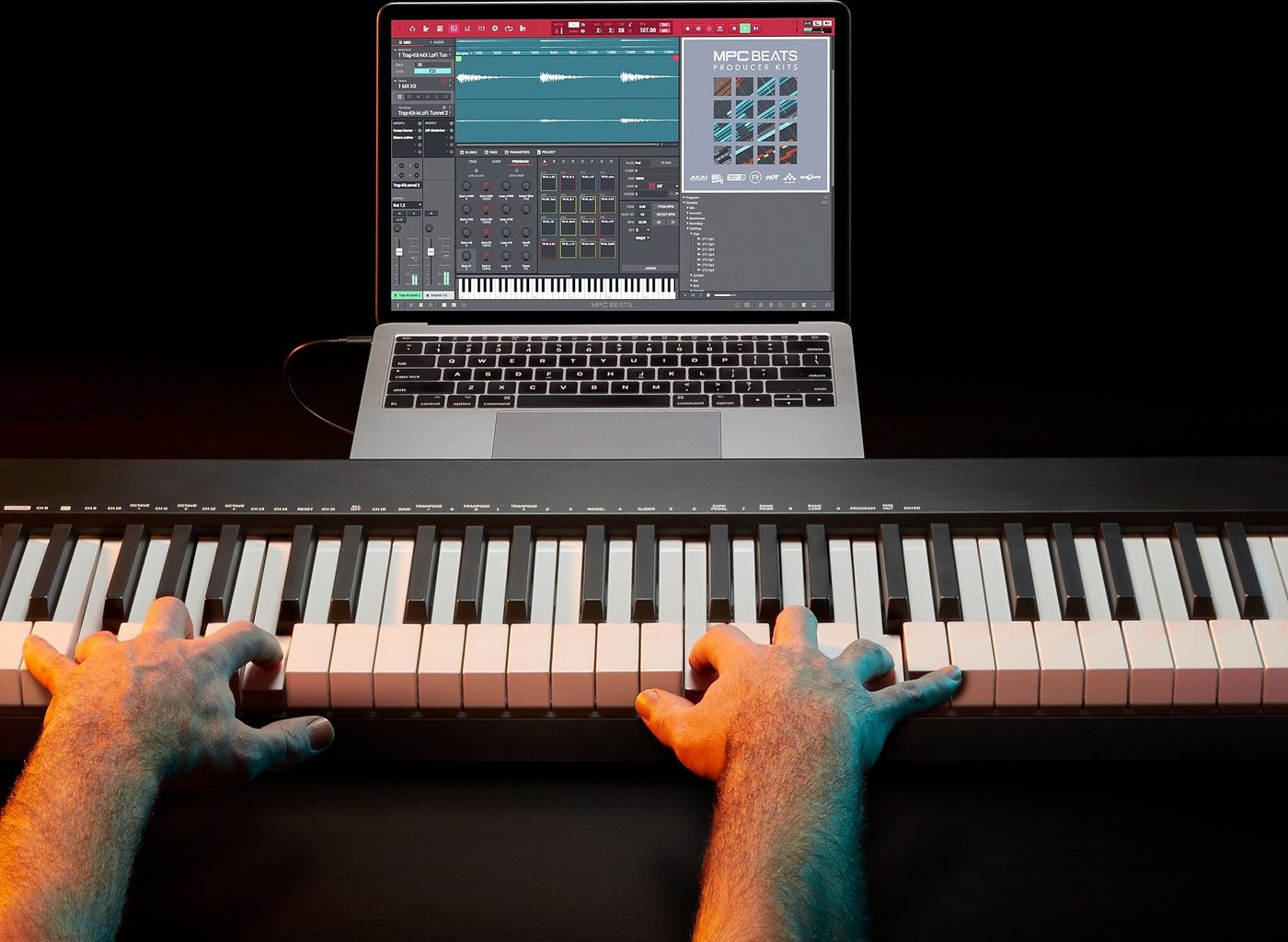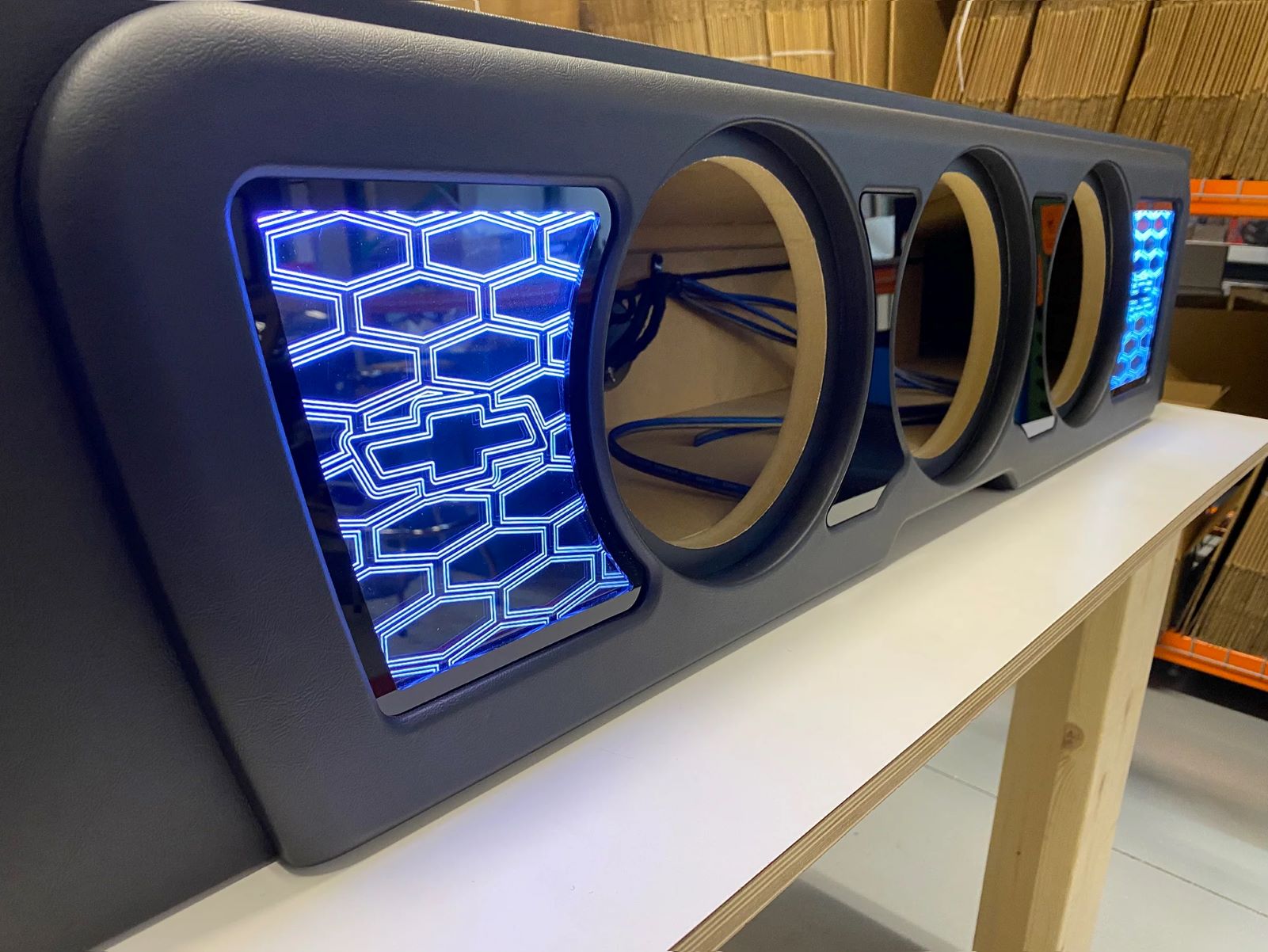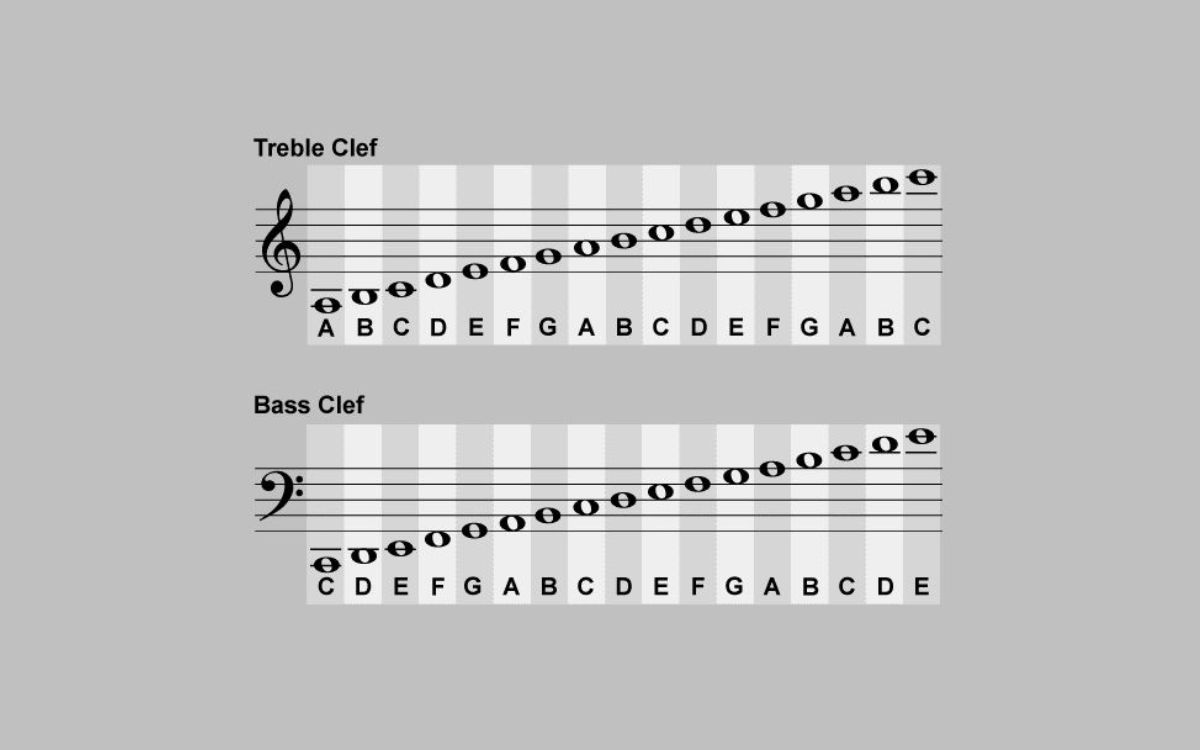Home>Devices & Equipment>Subwoofer>How To Get Deep Bass From Subwoofer
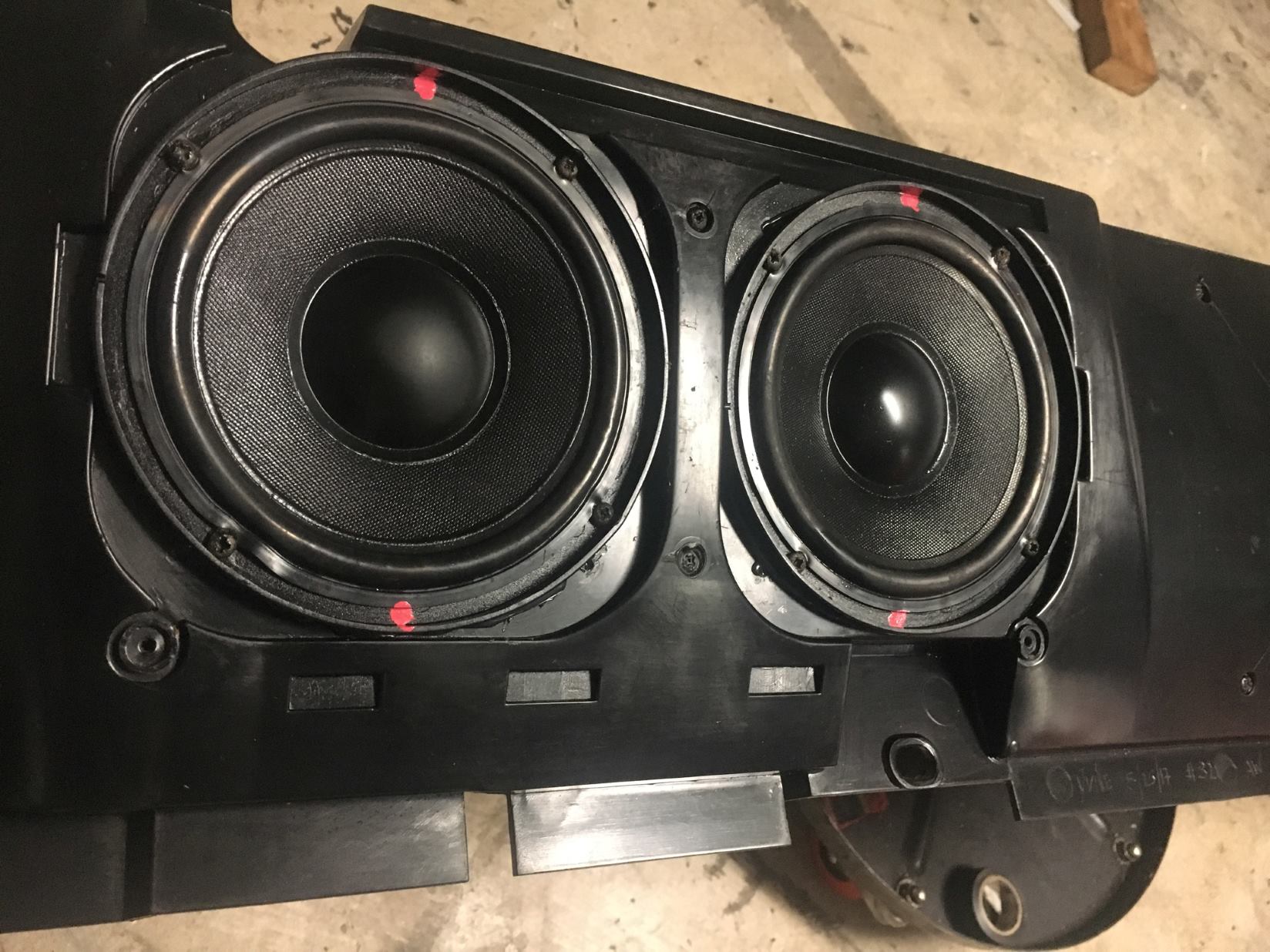

Subwoofer
How To Get Deep Bass From Subwoofer
Modified: February 18, 2024
Learn how to achieve deep, powerful bass from your subwoofer with our step-by-step guide. Unleash enhanced audio quality with expert tips for optimizing your subwoofer settings.
(Many of the links in this article redirect to a specific reviewed product. Your purchase of these products through affiliate links helps to generate commission for AudioLover.com, at no extra cost. Learn more)
Table of Contents
Introduction
Welcome to the world of subwoofers, where deep bass and immersive audio experiences await. If you’re a music enthusiast or a movie lover, you know that a subwoofer is an essential component of any audio system. These specialized speakers are designed to reproduce low-frequency sounds, adding depth and impact to your music and movie-watching sessions.
In this article, we will explore the fascinating world of subwoofers and guide you on how to get the most out of your subwoofer for that satisfying rumble and thunderous bass. Whether you’re a novice or a seasoned audiophile, we’ll cover everything from choosing the right subwoofer to optimal placement, setup, and adjustments.
Understanding the fundamental concepts of subwoofers is crucial to unleash their true potential. We will delve into the technical aspects of subwoofers, exploring their role in sound reproduction and the benefits they bring to your overall audio experience.
Choosing the right subwoofer can be a daunting task, given the plethora of options available in the market. Fear not! We will walk you through the various considerations to help you make an informed decision based on your specific needs and preferences.
Placement is key when it comes to subwoofers. They can significantly impact the sound quality depending on their position in the room. We will provide you with expert tips and guidelines on where to place your subwoofer for optimal bass response and seamless integration with your existing audio setup.
Understanding Subwoofers
Before we delve into the intricacies of subwoofers, let’s start by understanding their role in audio systems. A subwoofer is a specialized speaker designed to reproduce low-frequency sounds, typically ranging from 20Hz to 200Hz. While many speakers can reproduce bass frequencies to some extent, subwoofers excel at capturing and delivering the deep, powerful bass that adds richness and impact to your audio.
Subwoofers work in conjunction with your main speakers, which handle the midrange and high-frequency sounds. By offloading the low-frequency reproduction to a dedicated subwoofer, you free up your main speakers to focus on delivering cleaner, more detailed sound in the higher frequency range.
Subwoofers utilize larger driver units, usually around 8 to 18 inches in diameter, and are housed in specially designed enclosures that are optimized for bass performance. These enclosures are crucial in maximizing the subwoofer’s ability to produce low-frequency sound accurately and efficiently.
One of the key components of a subwoofer is the amplifier, which powers the driver and determines its output level. Subwoofers often have their own built-in amplifier, known as an active subwoofer, while others require an external amplifier to power them, known as a passive subwoofer.
The frequency response range of a subwoofer determines its ability to reproduce low-frequency sounds effectively. The wider the frequency response range, the more accurately the subwoofer can handle different bass frequencies. However, it’s important to note that not all subwoofers are created equal, and factors such as driver quality, enclosure design, and amplifier power also play significant roles in determining a subwoofer’s overall performance.
When it comes to subwoofer designs, there are two main types: sealed and ported. Sealed subwoofers are enclosed in a sealed box, which allows for tighter and more controlled bass response. On the other hand, ported subwoofers have a port or vent that enhances low-frequency output and can provide a more pronounced bass response.
Now that we have a solid understanding of what subwoofers are and how they work, let’s explore the factors to consider when choosing the right subwoofer for your audio setup.
Choosing the Right Subwoofer
When it comes to choosing a subwoofer, there are several factors to consider to ensure you get the right one for your audio needs. Here are some key considerations to keep in mind:
1. Size and Power: The size and power rating of a subwoofer will greatly impact its performance. Larger subwoofers with bigger drivers tend to produce deeper and more powerful bass. Additionally, the power rating of the subwoofer’s amplifier should match your audio system’s requirements for optimal performance.
2. Frequency Response: The frequency response range of a subwoofer indicates the range of bass frequencies it can accurately reproduce. Look for a subwoofer with a wide frequency response range that extends as low as possible for deep and rich bass reproduction.
3. Enclosure Type: Determine whether you prefer a sealed or ported enclosure. Sealed enclosures offer tighter and more controlled bass, while ported enclosures provide a more pronounced and extended low-frequency response.
4. Room Size: Consider the size of your listening room. Larger rooms may require more powerful subwoofers to fill the space with deep bass. Conversely, smaller rooms may benefit from smaller subwoofers to avoid overpowering the space.
5. Budget: Set a budget and stick to it. Subwoofers come in a wide range of prices, so determine how much you’re willing to spend before starting your search. Remember that higher-priced subwoofers often offer better build quality, performance, and additional features.
6. Reviews and Recommendations: Read reviews and seek recommendations from trusted sources or fellow audio enthusiasts. Hearing firsthand experiences can provide valuable insights and help you make an informed decision.
By considering these factors and understanding your specific audio needs, you can choose a subwoofer that complements your existing audio system and delivers the deep bass you desire.
Placing the Subwoofer
The placement of your subwoofer plays a vital role in maximizing its bass performance and achieving an immersive audio experience. Here are some key tips for placing your subwoofer:
1. Central Location: Position the subwoofer in the front of the room, preferably near the main speakers. This central location helps create a balanced soundstage and ensures that the bass is evenly distributed throughout the listening area.
2. Avoid Corner Placement: While it may be tempting to place the subwoofer in a corner for added bass reinforcement, this can result in boomy and overpowering bass. Instead, try to position the subwoofer away from walls to achieve a more balanced and controlled bass response.
3. Experiment with Placement: Every room is unique, and the ideal placement for your subwoofer may vary. Experiment with different locations to find the spot that offers the best bass response. Try moving it slightly forward or backward, or even diagonally across the room to find the sweet spot.
4. Distance from Walls: Keep some distance between the subwoofer and the walls to prevent excessive bass buildup. Generally, a few inches to a foot away from the walls can help reduce unwanted resonance and ensure a cleaner bass response.
5. Isolation: Use isolation accessories like foam pads or specialized subwoofer isolation platforms to minimize vibrations and improve the overall performance of your subwoofer. This can also help reduce the transmission of vibrations to adjacent rooms or floors.
6. Room Acoustics: Consider the acoustics of your room when placing the subwoofer. Large, open spaces may require more powerful subwoofers, while smaller rooms may need smaller, compact models. Additionally, utilizing acoustic treatments like bass traps can help improve bass response by reducing room resonances.
7. Subwoofer Direction: Experiment with the subwoofer’s orientation to find the best bass response. Some subwoofers perform better when placed facing the wall, while others may sound better when firing towards the center of the room. Try different angles and positions to find the optimal setup.
Remember that finding the perfect placement may require some trial and error. Take the time to fine-tune the position of your subwoofer, as it can greatly enhance your audio experience and bring out the full potential of your subwoofer’s deep bass capabilities.
Setting Up the Subwoofer
Once you have chosen the right subwoofer and found the optimal placement, it’s time to set it up properly. Follow these steps to ensure a seamless setup:
1. Connectivity: Determine the type of connectivity options available on your subwoofer and match them with the corresponding outputs on your audio receiver or amplifier. Most subwoofers use a standard RCA or LFE (Low-Frequency Effects) connection, but some may also feature wireless connectivity.
2. Cable Quality: Use high-quality cables to connect your subwoofer to the audio source. This ensures optimal signal transfer and minimizes the chances of interference or signal degradation. Additionally, make sure the cables are properly shielded to prevent any external interference from affecting the audio quality.
3. Phase Adjustment: Many subwoofers have a phase adjustment control that allows you to fine-tune the timing of the bass output. Experiment with the phase control to find the setting that provides the smoothest and most coherent integration between the subwoofer and your main speakers.
4. Crossover Frequency: Adjust the crossover frequency on your subwoofer or AV receiver. The crossover frequency determines the point at which the subwoofer takes over bass reproduction from the main speakers. Set the crossover frequency to blend seamlessly with the rest of the speakers, ensuring a smooth transition between the main speakers and the subwoofer.
5. Volume Level: Set the volume level of the subwoofer to match the rest of your audio system. Start with a moderate volume level and make adjustments as needed while listening to familiar music or movie scenes with prominent bass content. Avoid overpowering the sound system with excessive bass, as this can disrupt the overall balance of the audio.
6. Auto Calibration: If your AV receiver or audio processor supports it, consider using the auto calibration feature to optimize the subwoofer settings. This feature can analyze the room’s acoustics and make adjustments to ensure accurate bass reproduction based on your specific listening environment.
7. Testing and Fine-Tuning: Take the time to test and fine-tune the subwoofer settings by listening to a variety of audio content. Pay attention to the bass response, ensuring it is tight, impactful, and well-integrated with the rest of the sound. Make any necessary adjustments to the volume, phase, and crossover settings until you achieve the desired bass performance.
By following these setup steps and making adjustments as needed, you can optimize the performance of your subwoofer and enjoy a well-balanced and immersive audio experience.
Adjusting the Subwoofer Settings
Adjusting the settings of your subwoofer is essential to ensure optimal bass performance and integration with your audio system. Here are some key settings to consider:
1. Volume Level: Start by setting the subwoofer volume level to a moderate level. Fine-tune the volume by listening to different audio tracks and adjusting it to your preference. Avoid overpowering bass that can overshadow the rest of the audio.
2. Crossover Frequency: The crossover frequency determines the point at which low-frequency sounds are redirected from your main speakers to the subwoofer. Set the crossover frequency to seamlessly blend the bass output between the main speakers and the subwoofer. Experiment with different frequencies based on your speakers’ capabilities and the content you’re listening to.
3. Phase Adjustment: The phase adjustment allows you to synchronize the subwoofer’s bass output with the main speakers. Try different phase settings and listen for changes in bass impact and coherence. Typically, a phase setting of 0 degrees works well, but it can vary depending on the room acoustics and speaker placement.
4. Bass EQ: Some subwoofers offer EQ (equalization) controls to adjust the bass response further. These controls allow you to boost or cut specific frequencies to optimize the bass for your room’s acoustics and personal preferences. Use these adjustments sparingly, making subtle changes to achieve the desired bass balance without compromising overall sound quality.
5. Room Correction Software: If you have a receiver or processor with room correction software, take advantage of it. These software systems utilize advanced algorithms to analyze your room’s acoustics and make precise adjustments to optimize the subwoofer’s performance. Follow the instructions provided with the software for proper setup and calibration.
6. Listening Environment: Consider the specific characteristics of your listening environment. If your room has large windows, hard surfaces, or other acoustic challenges, you may need to make additional adjustments to compensate for these factors. Experiment with different settings to achieve the best bass performance in your unique listening environment.
7. Subwoofer Positioning: Fine-tuning the subwoofer’s position can also help improve its performance. Small adjustments to its placement or orientation can impact the bass response. Listen for changes, such as tighter bass or reduced boominess, and make minor adjustments accordingly.
Remember that the adjustments needed for optimal subwoofer settings may vary depending on personal preference, room acoustics, and the specific audio content being played. Take your time to listen and experiment with the settings to achieve the best possible bass performance that suits your individual taste and audio system.
Enhancing Bass Performance
If you’re looking to maximize the bass performance of your subwoofer and create a more immersive audio experience, here are some tips to enhance the bass response:
1. Optimal Subwoofer Placement: Ensure that your subwoofer is placed in the optimal position within your room. Experiment with different placements to find the spot that offers the best bass response and integration with the rest of your audio system. Remember to avoid corner placement, as it can result in boomy bass.
2. Adjust Crossover Settings: Fine-tune the crossover settings to ensure a seamless integration between your main speakers and the subwoofer. Set the crossover frequency to blend the low-frequency sounds from the subwoofer with the mid and high-frequency sounds from the main speakers for a balanced and cohesive audio experience.
3. Utilize Bass Management: Make use of the bass management feature in your AV receiver or audio processor. This feature allows you to redirect low-frequency sounds from the main speakers to the subwoofer, relieving them of the burden of reproducing deep bass frequencies and allowing them to focus on mid and high-range sounds.
4. Consider Room Acoustics: Assess the acoustics of your listening room and consider incorporating acoustic treatments such as bass traps or diffusers. These can help minimize unwanted resonances, echoes, or reflections that can negatively affect the bass performance. Experimenting with room treatments can lead to a tighter and more accurate bass response.
5. Use EQ and Room Correction: If your subwoofer has built-in equalization controls or if your audio system offers room correction software, take advantage of these features. They can help fine-tune the bass response by compensating for room acoustics and correcting any frequency imbalances, ensuring a more accurate and impactful bass reproduction.
6. Upgrade Speaker Cables: Consider using high-quality speaker cables to minimize signal loss and interference. Well-insulated and properly shielded cables can help maintain the integrity of the audio signal, resulting in improved bass performance and overall sound quality.
7. Optimize Amplifier Power: Make sure your subwoofer is receiving sufficient power from the amplifier. Ensure that the amplifier’s power output is appropriate for your subwoofer’s requirements. An underpowered subwoofer may result in weak and distorted bass, while an overpowered subwoofer can lead to an unbalanced and overwhelming bass response.
Remember that enhancing bass performance is a process of experimentation and fine-tuning. Take the time to listen to various audio tracks and make incremental adjustments to find the perfect balance of deep, powerful bass that enhances your audio experience.
Troubleshooting Bass Issues
If you’re experiencing issues with the bass performance of your subwoofer, don’t worry! There are several common problems that can be easily resolved. Here are some troubleshooting tips to help you address bass-related issues:
1. No Bass Output: If you’re not getting any bass output from your subwoofer, first check the power connection and ensure that it is securely plugged in. Also, verify that the subwoofer’s power switch is turned on. Make sure the audio cables are properly connected to both the subwoofer and the audio source. Verify the settings on your receiver or audio processor to ensure the subwoofer is set to a suitable volume level and that the crossover settings are correctly configured.
2. Weak or Muddy Bass: If you’re experiencing weak or muddy bass, check the subwoofer’s volume level. Increase it gradually to achieve the desired bass impact without overpowering the rest of the audio. Assess the subwoofer’s placement within the room and experiment with repositioning it to find the spot that provides better bass response. Also, consider adjusting the crossover frequency to ensure a proper blend between the subwoofer and main speakers.
3. Boomy or Overpowering Bass: If your bass sounds boomy or overwhelming, check the positioning of your subwoofer. Moving it away from walls or corners can help reduce excessive bass buildup. You might also want to adjust the phase control to find the setting that provides a more balanced and tighter bass response. Additionally, lowering the volume level or adjusting the crossover settings can also help mitigate overpowering bass.
4. Interference or Humming Noise: If you’re experiencing interference or a humming noise from the subwoofer, ensure that all cables are properly connected and securely plugged in. Check for any nearby electronic devices or cables that may be causing electromagnetic interference. Consider using shielded cables to minimize interference. If the issue persists, try moving the subwoofer to a different power outlet or using a power conditioner or surge protector to filter out potential electrical noise.
5. Imbalanced Bass Output: If the bass output seems imbalanced or uneven, check the settings on your receiver or audio processor’s bass management. Ensure that the main speakers and the subwoofer are properly configured and assigned the correct crossover frequencies. Also, double-check the phase control settings for proper synchronization between the subwoofer and main speakers.
6. Speaker Cone Distortion: If you notice distortion or clipping in the bass response, it may indicate that your subwoofer is being overdriven or exceeding its limits. Double-check the amplifier’s power output and make sure it matches the power requirements of your subwoofer. If necessary, lower the volume level to prevent the speaker cone from distorting at high volumes.
If you have exhausted all troubleshooting steps and are still experiencing bass-related issues, it may be helpful to consult the user manual for your subwoofer or seek support from the manufacturer or a professional audio technician. They can provide further guidance and assistance to address any specific technical issues you may be encountering.
Conclusion
Congratulations! You’ve now gained a comprehensive understanding of subwoofers and how to optimize their performance for deep, immersive bass. By choosing the right subwoofer, placing it correctly, and adjusting the settings appropriately, you can enhance your audio experience to new levels.
Remember that finding the perfect subwoofer for your needs involves considering factors like size, power, frequency response, and budget. Experiment with placement options and fine-tune the subwoofer settings to achieve the best bass integration with your main speakers. Take into account the specific characteristics of your listening room, considering room acoustics and utilizing bass management and equalization tools to enhance the bass response.
If you encounter any bass-related issues, don’t get discouraged. Troubleshoot by checking connections, adjusting volume levels, and experimenting with phase and crossover settings. Refine the bass performance by addressing room acoustics, avoiding boomy or overpowering bass, and minimizing interference or distortion.
With a well-chosen and properly set up subwoofer, you can transform your audio experience, immersing yourself in deep, powerful bass that adds richness and impact to your favorite music, movies, and games.
Now, it’s time to sit back, relax, and enjoy the full potential of your subwoofer as it takes your audio to new depths. Embrace the rumble, feel the thunder, and immerse yourself in a world of rich, enveloping sound!


